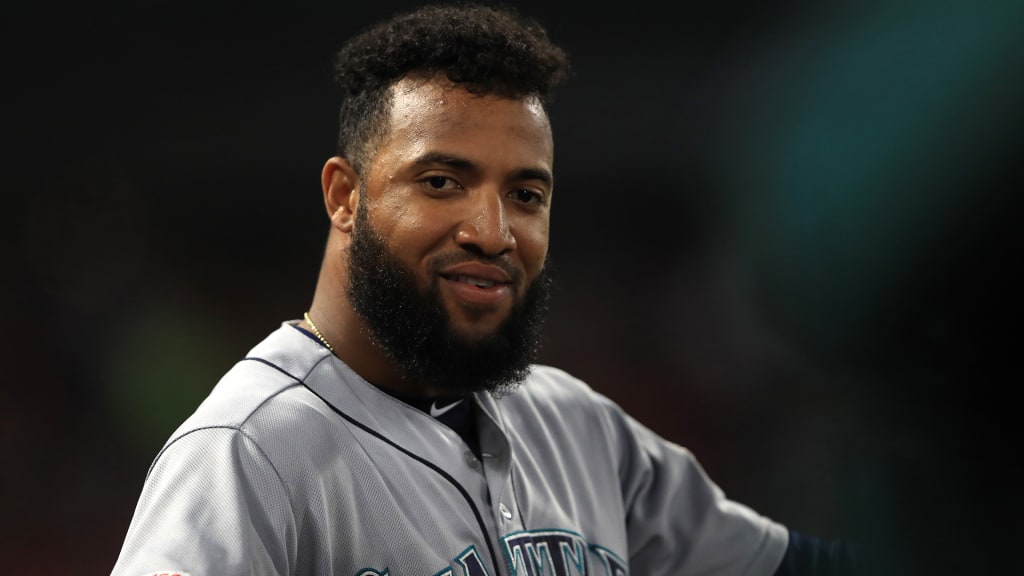
SEATTLE -- The Mariners chose not to tender contracts to outfielder Domingo Santana and infielder Tim Beckham on Monday, meaning the two veterans now become free agents able to sign with any team.
All the rest of Seattle’s arbitration-eligible players were tendered contracts and remain under team control for 2020. Here’s what it all means:
Why were Santana and Beckham non-tendered?
In the case of Beckham, it’s pretty obvious. The 29-year-old signed a one-year, $1.75 million deal with Seattle last year to provide a stopgap at shortstop until J.P. Crawford was ready. Once Crawford was promoted from Triple-A Tacoma, Beckham didn’t have much of a role and then was hit with an 80-game MLB suspension in early August.
MLB Trade Rumors was projecting Beckham to earn $3 million in this final season of arbitration eligibility before becoming a free agent in ’21, so it made no sense for the Mariners to enter into arbitration and be locked into having to pay him something in that range, particularly given he still has 32 games of suspension to serve next season.
Santana was a tougher call, given he’s a 27-year-old corner outfielder with power and two years of team control remaining before free agency. But like Beckham, Santana’s defensive shortcomings were an issue and he didn’t seem to fit in Seattle’s plans going forward given the return to health of Mitch Haniger, the arrival of Kyle Lewis and the promise of young prospects Jarred Kelenic and Julio Rodriguez. Santana made $1.95 million last year and was projected at $4.4 million in arbitration this winter by MLB Trade Rumors, which is likely why the Mariners had no luck trying to trade him. After batting .253/.329/.441 with 21 homers and 69 RBIs in 121 games, Santana will surely get a shot to play somewhere next year, but presumably at a lower salary than his arbitration projection.
Which arbitration-eligible players were tendered contracts?
Per MLB rules, teams had to tender contracts to all 40-man roster players who aren’t already signed to long-term contracts prior to Monday’s deadline. That included 27 Mariners in the 0-3 year service time range who don’t yet qualify for the arbitration process. Those players all will be eventually signed to deals in the range of the MLB minimum of $565,000 for 2020.
It’s the arbitration-eligible players (in the 4-6 years of service time) that get interesting because once they are tendered a contract, the club is committed to the binding arbitration process. The Mariners have four players who now fall into that category – outfielders Mallex Smith and Haniger, catcher Omar Narváez and reliever Sam Tuivailala.
They’d already released Ryon Healy and Keon Broxton, who both opted for free agency after being assigned outright to Triple-A Tacoma. Additionally, reliever Anthony Bass was claimed by the Blue Jays and reliever Matt Wisler was claimed by the Twins after they were moved off the 40-man roster rather than enter the arbitration process.
What happens next for the tendered players?
Haniger, Smith, Narváez and Tuivailala now can negotiate contracts with Seattle over the next month. If no deal is reached, both sides exchange arbitration figures on Jan. 10, with the player suggesting what he wants to be paid and the club countering with its offer. From there, a deal can still be worked out, but if no compromise is reached, the decision goes to an arbitration panel that either picks the player’s or the team’s offer in a binding settlement.
Typically the Mariners come to settlements rather than going all the way through the arbitration process. Seattle has had only two cases since 2000 go to an arbitration hearing. Reliever Tom Wilhelmsen lost his case in 2014 as the panel sided with the team's offer of $1.4 million over his requested $2.2 million. That was the first arbitration hearing for the club since 2003, when starting pitcher Freddy Garcia won his case for $6.875 million over the team's $5.9 million offer.
Per MLB Trade Rumors, Haniger’s projected arbitration figure will likely be about $3 million, with Narváez at $2.9 million, Smith at $2.7 million and Tuivailala at $900,000.
